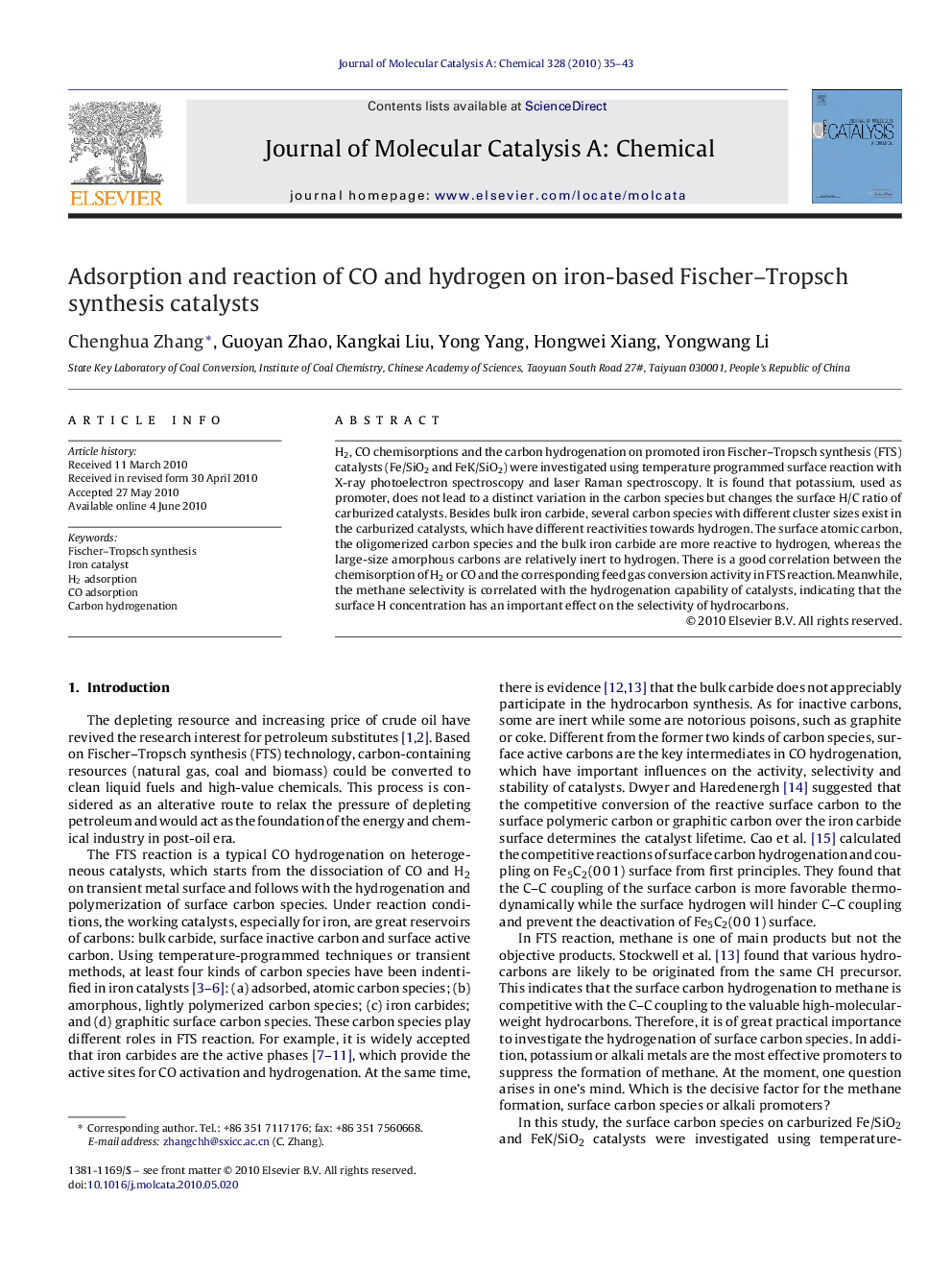| Article ID | Journal | Published Year | Pages | File Type |
|---|---|---|---|---|
| 66672 | Journal of Molecular Catalysis A: Chemical | 2010 | 9 Pages |
H2, CO chemisorptions and the carbon hydrogenation on promoted iron Fischer–Tropsch synthesis (FTS) catalysts (Fe/SiO2 and FeK/SiO2) were investigated using temperature programmed surface reaction with X-ray photoelectron spectroscopy and laser Raman spectroscopy. It is found that potassium, used as promoter, does not lead to a distinct variation in the carbon species but changes the surface H/C ratio of carburized catalysts. Besides bulk iron carbide, several carbon species with different cluster sizes exist in the carburized catalysts, which have different reactivities towards hydrogen. The surface atomic carbon, the oligomerized carbon species and the bulk iron carbide are more reactive to hydrogen, whereas the large-size amorphous carbons are relatively inert to hydrogen. There is a good correlation between the chemisorption of H2 or CO and the corresponding feed gas conversion activity in FTS reaction. Meanwhile, the methane selectivity is correlated with the hydrogenation capability of catalysts, indicating that the surface H concentration has an important effect on the selectivity of hydrocarbons.
Graphical abstractH2 and CO adsorptions have important influences on activity and selectivity of catalysts. Potassium decreases the surface H/C ratio and the hydrogenation capability of catalysts.Figure optionsDownload full-size imageDownload high-quality image (177 K)Download as PowerPoint slide
